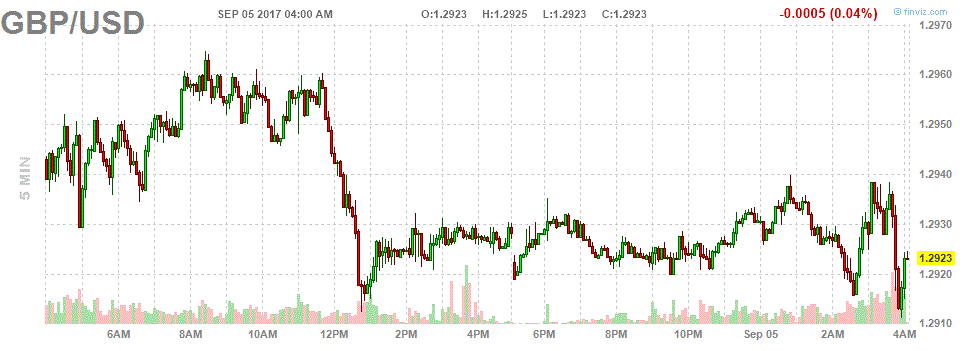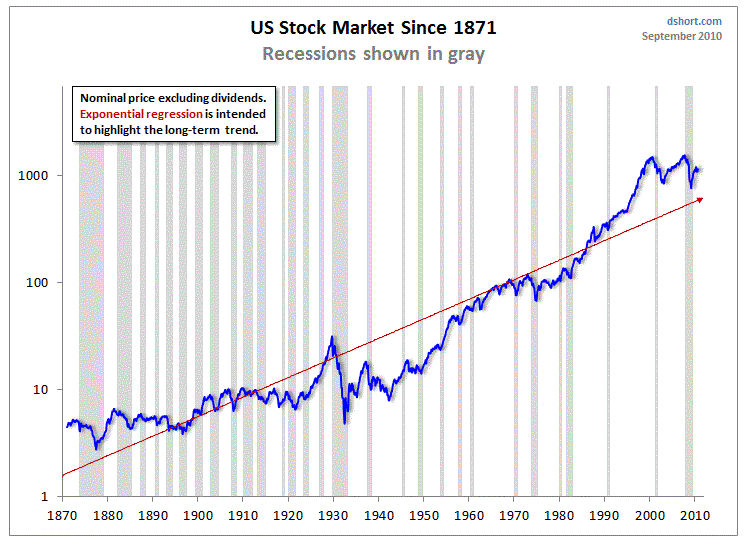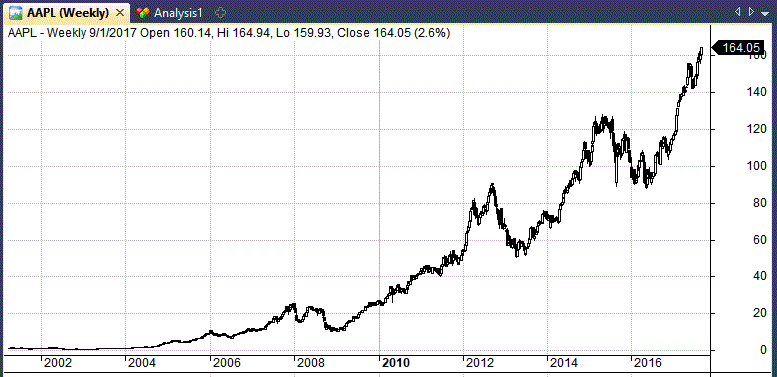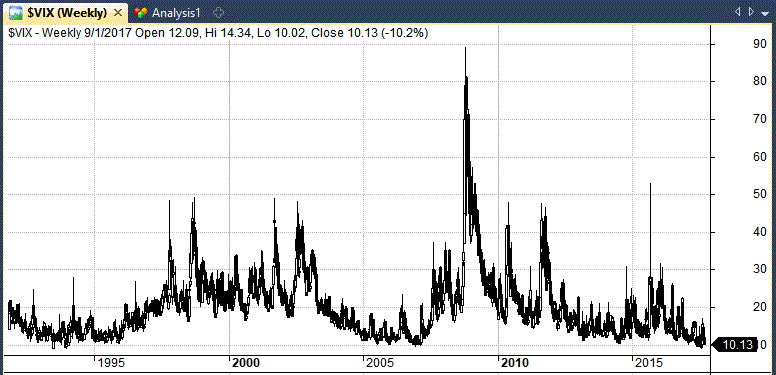
Hedge fund manager Ray Dalio says that every time he learns something new or makes a mistake in the markets he writes it down so that he can go over it later and learn from it.
I’ve been doing something similar and it does help keep a record of things. Here’s a list of the most important trading lessons that I have learnt over the years.
A List Of Important Trading Lessons & Tips
1. To succeed in trading you need good money management, the right psychology and a profitable edge. Finding an edge is the hardest part.
2. A trading system never works all the time but it can go in and out of profitability.
3. Trading systems are best when combined together, and when used with common sense. Combining systems together is one of the best ways to reduce drawdown and improve consistency.
4. Never fight the trend. Trends can go on for much longer than you’d expect. Never underestimate the power of momentum and volume.
5. Never add to a losing position. This one rule will stop you from taking big hits to your capital and destroying your confidence. It’s fine to ‘build a position’ but make sure that was the plan from the start.
6. Markets move based on supply and demand, human interactions and random noise. You cannot predict or explain every major move.
7. As humans, we have many mental biases that can hurt our trading. Such as the tendency to overweight more recent or more memorable information (availability bias).

8. Don’t believe anything until you have tested and tried it out for yourself. What used to work ten years ago may not work today.
9. Learn all you can about fundamentals but keep trading simple. Track and analyse frequently to see what is working.
10. In stocks, overnight moves can sometimes be just as profitable as intraday moves.
11. All technical indicators are lagging so they are always late to provide signals. You can watch them but you need to understand them.
12. Naked price action and pattern recognition can be profitable but takes practice and requires context. Candlestick patterns are useful for timing but don’t fight the longer-term trend.
13. The best candlestick is the inverted hammer. I studied 26 candlestick patterns across all types of markets and the inverted hammer was the best.
14. Buying stocks that have gapped lower on the open can be a good way to start the day. This is especially true if the stock is in a long-term uptrend and opens below it’s pivot.
15. Leveraged ETFs are a waste of time for long term investors. Most of them have a negative expectancy due to time decay. This could be the base of a good short strategy.
16. The best trades move into profit very quickly. You almost don’t get a chance to jump on board.
17. If a trade is not working out, give it some time. The worst place to exit is at your stop loss – but never move your stop further away once you’ve placed it and never break your risk control.
18. You don’t need to trade. If the market is quiet or behaving strangely, just wait it out. A new opportunity always comes along soon.
19. Always watch more than one time-frame. If you see a good trade on an hourly chart, see how it looks on the daily chart and weekly chart too.
20. Never trade off a 1-minute, 3-minute, or 5-minute chart alone. Too much noise.

21. If you want to scalp the market you’re going to need the order book. The order book can help you ‘see’ the market and assess your risk. If there are orders behind you, it will be easier to get out.
22. No trade is perfect. You cannot buy the exact low and sell the exact high. Learn to be happy ‘taking chunks’.
23. Never underestimate the importance of booking profits. If you’ve had a few losing trades, taking a profit is the best way to restore confidence.
24. If too many eyes are watching a breakout, it will probably fail. Wait for a pullback before re-entering the trend.
25. If you trade on margin, never risk more than 2%.
26. Be careful when placing your stops near round numbers. These numbers are where all the orders are.
27. If a market breaks through a round number with conviction, it will likely keep going in that direction for the rest of the day.
28. The stock market is the ultimate leading indicator. It will go down well before an economic recession hits. And it will go up before the recovery starts.
29. A recession does not mean stocks will necessarily go down. Stocks can go up during a recession and down even if the economy does well. Follow price not lagging economic indicators.

30. Political shocks, natural disasters and major events can all move the stock market. But the biggest driver is company earnings. What is the outlook for profits?
31. The market moves in anticipation of an event. Learn how to ‘buy the rumour and sell the fact’ and stay one step ahead.
32. Good risk:reward trades can often be found when an event is ‘priced in’, by going the other way.
33. Always give your trades enough time to come good. Never make a trade, change your mind and take it off. Plan to make a maximum of one or two trades a day and stick with your plan.
34. Follow a system and pay attention to statistical analysis. But don’t be afraid to skip a trade that doesn’t feel right. Not losing money is the most important part.
35. The best stocks for breakout systems are those that are gradually grinding higher. Be careful of breakouts that are also overbought (RSI over 70 or 80).
36. Never be afraid to buy stocks making new highs. A great stock will make thousands of new highs over it’s history.

37. Don’t give up on a system after a few losing trades because that might be the time the system turns around. Learn about the law of small numbers.
38. Trend following systems and momentum strategies are not as powerful as they used to be. Lots of people are watching these so look to trade them on markets that the crowd aren’t watching and try to be different.
39. Don’t ignore your instincts. Instincts can be a powerful processor of thousands of variables and can give good advice. However, never make trades based on emotions, especially hope, fear or greed.
40. When you are losing, don’t fight the market. Play defensive. Take some time off if you need to.
41. You will never win every trade so learn to accept your losses. If you can accept your losses without emotion you will have 95% of the psychological side covered.
42. Never chase a trade. If you missed your entry, you missed it. Suck it up and wait for the next one. A new opportunity will always come along soon.
43. The PE ratio is virtually meaningless on it’s own. But it can be useful when understood in context and when combined with other variables such as ROE, cash flow and trend.
44. Trading systems are crucial for traders. But they are complex and 99% of traders will lose money trying to create their own. Fortunately, there are good strategies that traders can use, learn from and adapt for their needs.
45. Most trading systems only have a very small edge but that’s OK. Virtu only wins 51-52% of its trades but it went 6 years with only one losing day. Virtu harnesses the power of large numbers to exploit it’s edge.
46. Even when using a system, check the economic calendar in the morning and be prepared for major market events. If you hold a trade during an important economic release then you should have an opinion on what will happen.
47. Stocks always fall faster and harder than they rally on the way up.
48. Watching the VIX is a useful way to time the market longer term. When the VIX is under 12, be prepared to take some money off the table. When the VIX is above 20, you can be more confident going long. Keep an eye on the TED spread too.

49. Fundamental analysis can give you the extra confidence you need to sit with a good trade once you’ve put it on.
50. Try to short stocks as volume peaks. As volume declines, traders book profits and that is when the best short trades can be made.
51. If you’re holding a short position for longer than a day, be prepared for sharp moves overnight. This is why you must always trade small.
52. When trading, you cannot win every single day. Trade light and stay nimble. Keep your day job until you can trade consistently. Longevity is extremely important.
53. It’s very hard to make money trading if you hold trades for less than a couple of hours. Give them the time they need to show a decent profit. Keep losses short and winners long.
54. Do not start with the intention of trading for regular income. Your trading account is a precious asset that you need to keep growing in order to compound your wealth and earn bigger sums down the line.
55. If you are lucky enough to make real, life-changing sums of money in this game, don’t be afraid to quit while you’re ahead.
56. Don’t worry about what anyone else is doing. Forge your own path.

Thanks for the great list JB! I will be sharing this one with my followers for sure. I might also be wise to print it out and paste above my desk! Thanks again and have a great week.
Thanks Jay, yeah I might print it off myself. Maybe a distilled version. Cheers!
Thank you for another post that is worth gold! Cheers!
Thanks for the comment mate